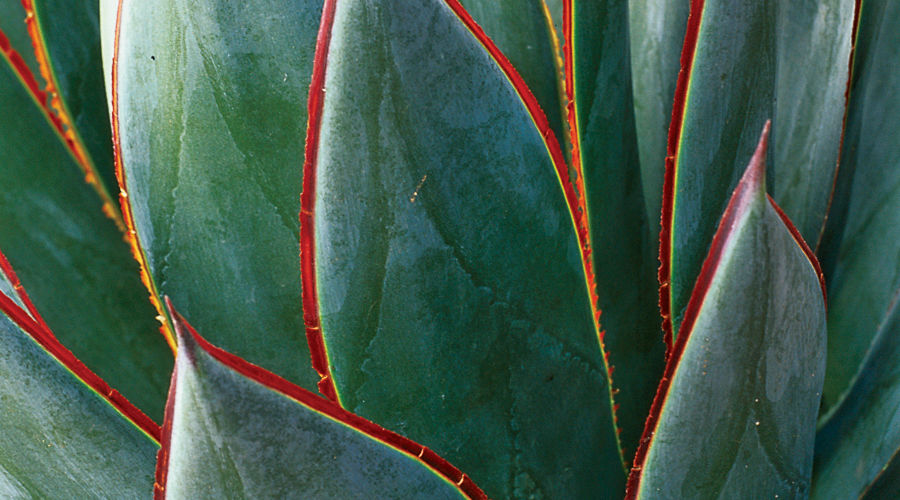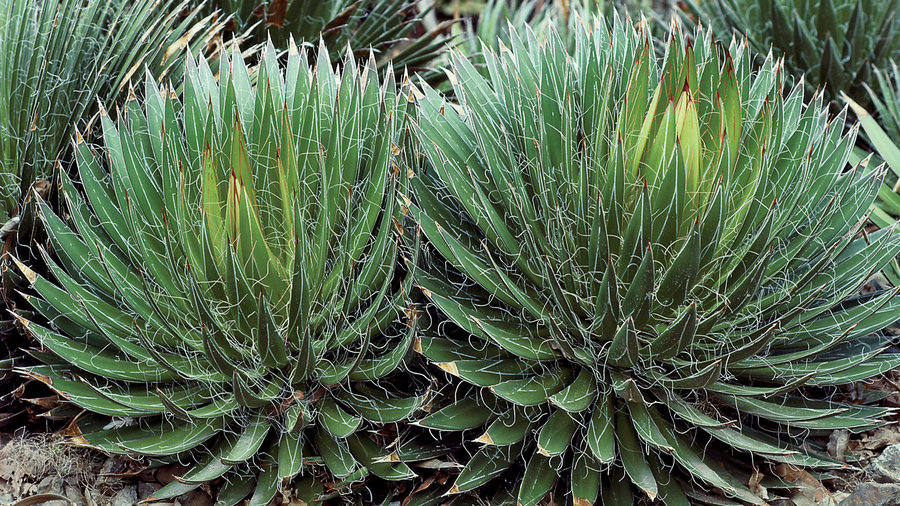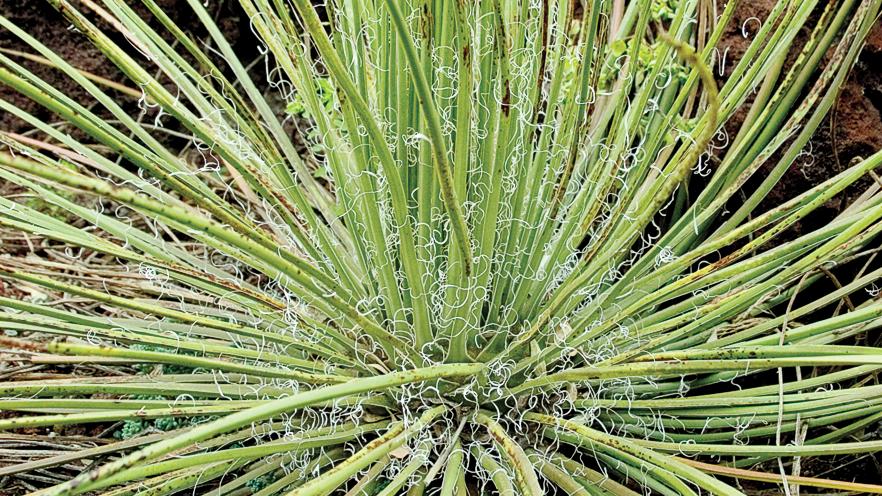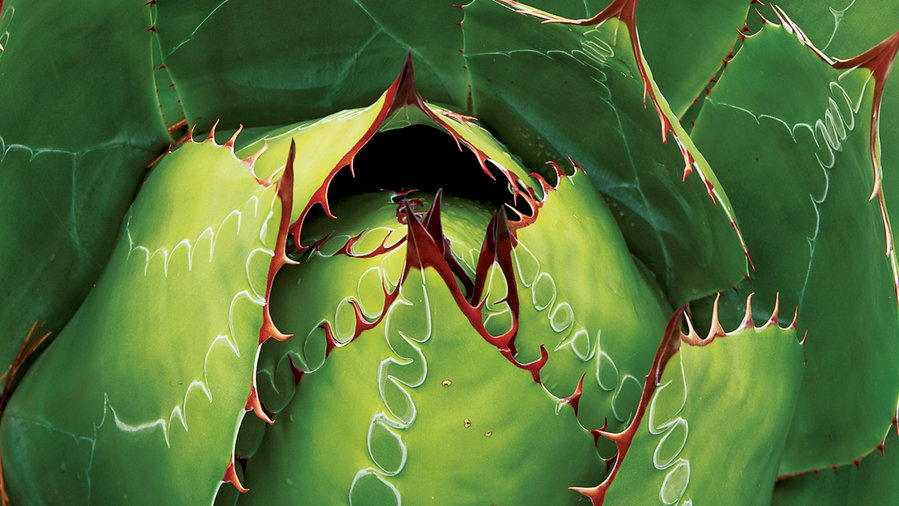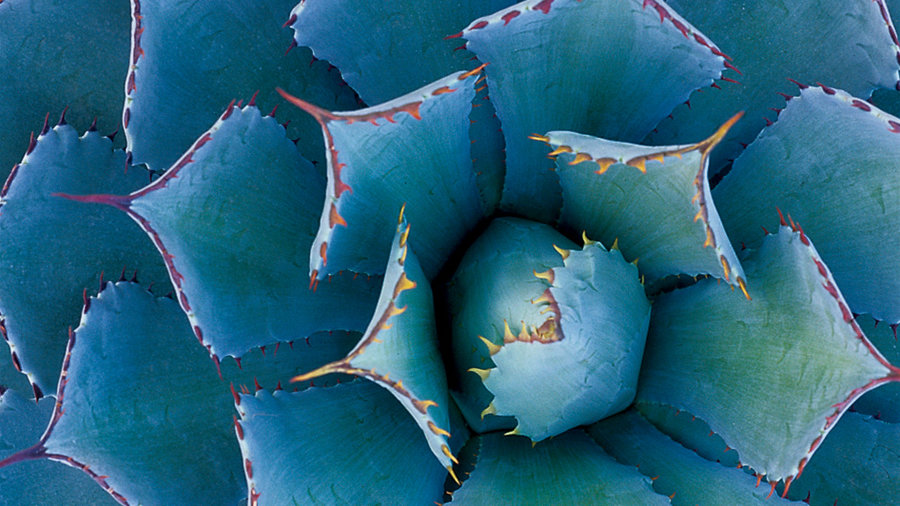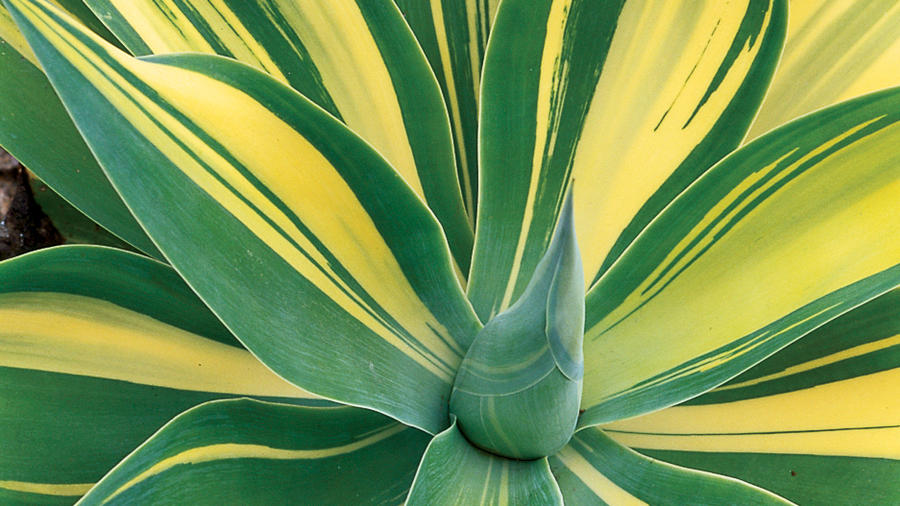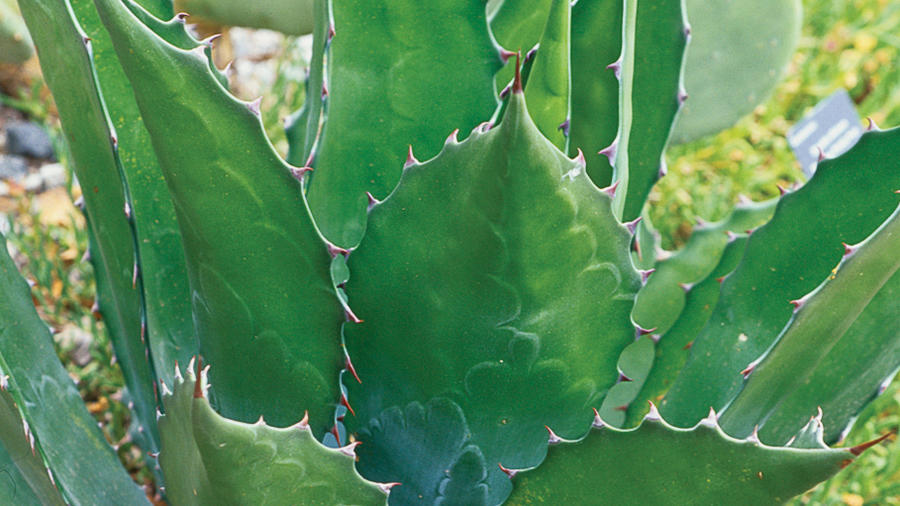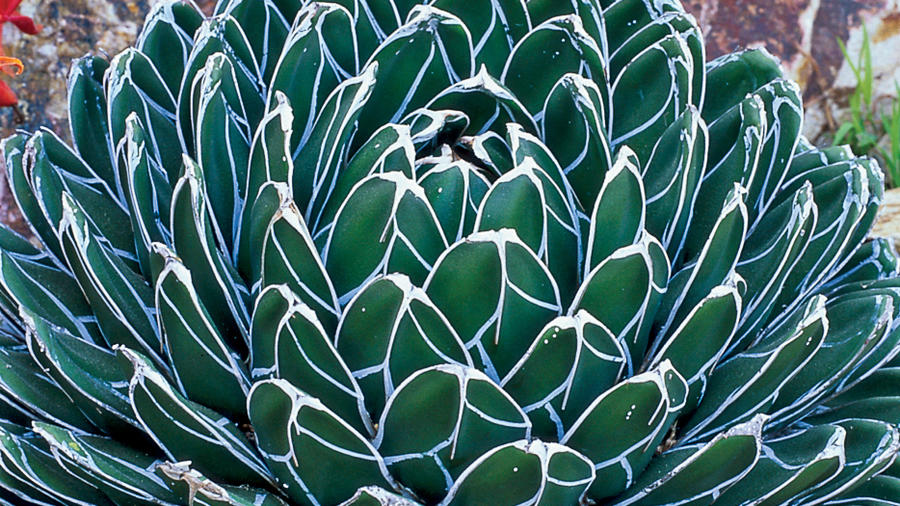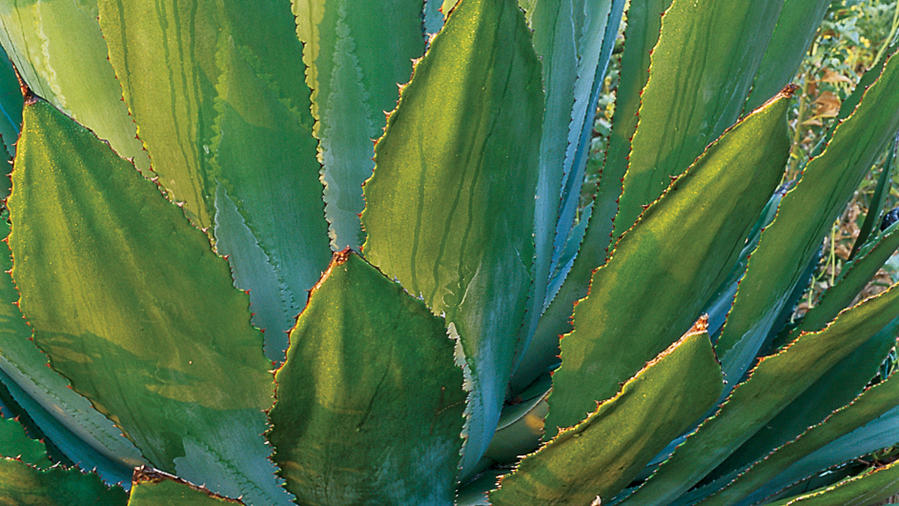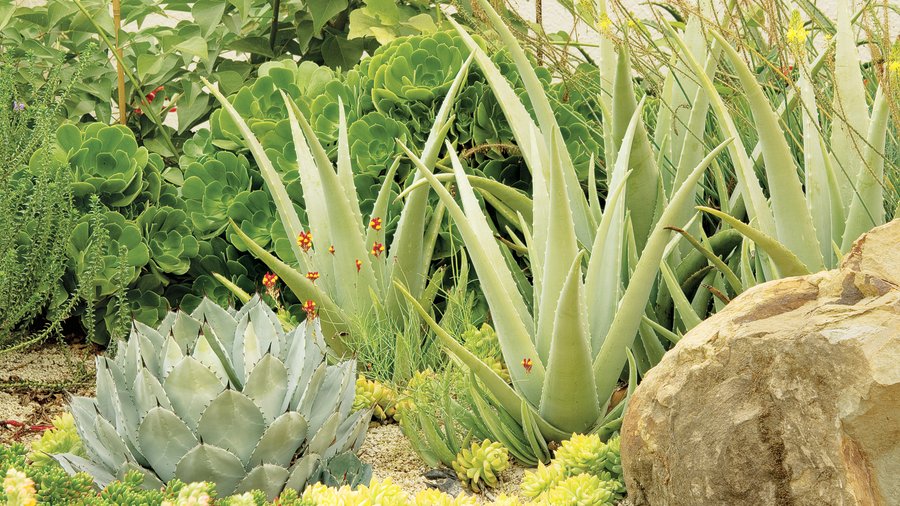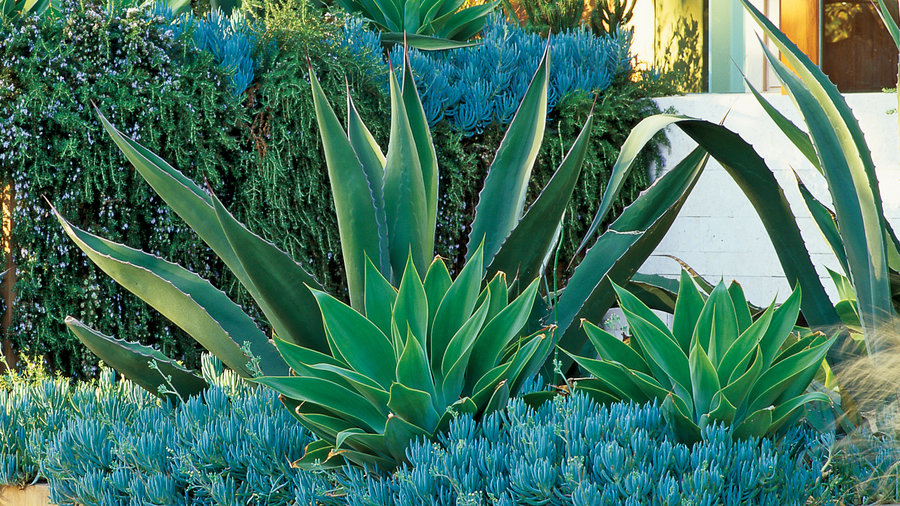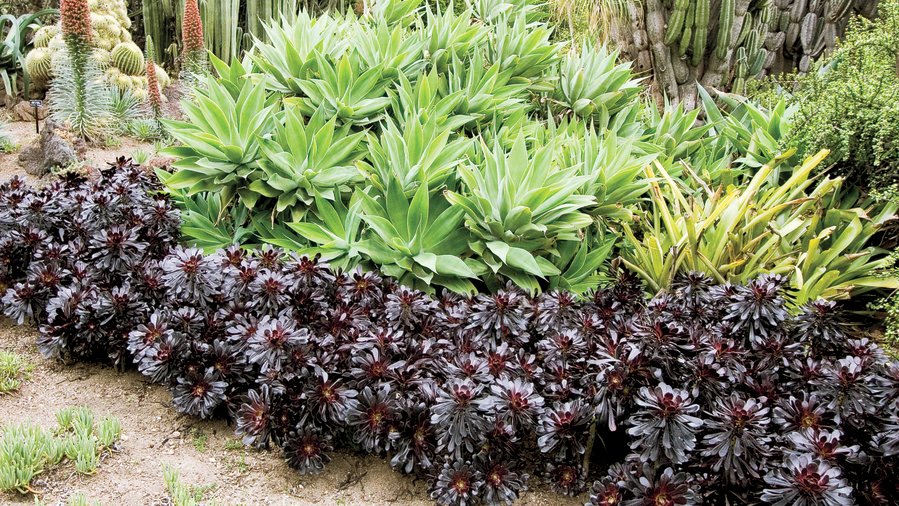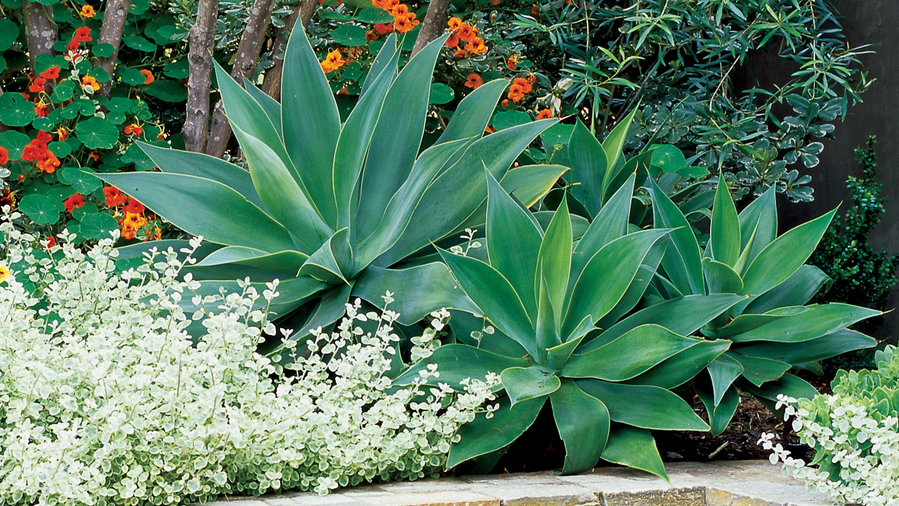Saxon Holt
Agave 'Blue Glow'
Rosettes of smooth spineless foliage have a distinctly blue cast (A. ‘Blue Flame’ is similar). Leaves grow 2½ feet long. Prefers a bit of shade in low desert.
Richard Shiell
Octopus agave A. vilmoriniana
Fleshy, outward-twisting leaves on this agave resemble tentacles, hence its common name, octopus agave. Pale green rosettes on this giant beauty can reach up to 6 feet wide. There are no teeth to worry about; just one terminal spine. Like all agaves, this one will die after it blooms at maturity (after about ten years); pot up the baby plantlets that it produces along its blooms spike to keep yourself in an octopus’s garden for years to come.
Jerry Pavia
Thread agave A. filifera
Here’s another petite specimen: a 2-foot-wide dark green species decorated with white margins and fuzzy white filaments, lending itself the common name, thread leaf agave. Native to central Mexico, A. filifera behaves well in containers and planted directly in the garden. Growing this agave plant is easy: it loves to be ignored and will reproduce itself with new little heads that can be allowed to spread to fill in large areas, or can be potted up.
Richard Shiell
Twinflowered agave A. geminiflora
A. geminiflora, or twin-flowered agave, is an interesting plant from Mexico’s west coast. It forms a dense rosette of 2- to 3-foot spaghetti-narrow green leaves with curly white filaments fringing off the edges. It performs beautifully in containers. Provide light shade in hottest desert areas in summer, but otherwise this is a very fuss-free agave.
Jack W. Dykinga
Mountain agave A. montana
One of the most cold-tolerant Agave species, this gorgeous plant grows at elevations up to 9,000 feet in the montane wilds of Mexico. It grows fairly large—4 feet tall by 5 feet wide—and looks like an enormous artichoke! The leaves are bud-printed; impressions of the adjacent leaves’ teeth are pressed into the leaves surrounding them. This creates the interesting zigzag stick down the midrib of each stiff leaf.
Perhaps sensing its demise, the leaves will turn an angry red as it readies to bloom; the flowering shoot emerges in the fall and then stop partway through the process to wait out the winter. Then it the spring, blooming resumes and clusters of yellow blossoms cover the 15 foot-tall stalk.
Jerry Pavia
Verschaffelt agave A. potatorum
Also known as Verschaffelt agave, this plant hails from the partial-desert areas in Mexico between Puebla and Oaxaca. Only 2 feet in diameter, this beauty is petite enough for any garden. Broad, blue-gray leaves with reddish spine tips offer a striking contrast to smaller agaves and red Echeveria varieties. They’re attractive in pots and tough enough for the driest desert gardens; plant them in full sun in all but the hottest climates.
Jerry Pavia
Lion's mane agave A. attenuata 'Variegata'
This agave has multiple names: lion’s tail, foxtail, swan’s neck. Each name is a nod to the long, arching stem that develops into a 5-foot-tall trunk, from which the strapping, spineless leaves on this plant grow. This variety is pale green agave with creamy yellow stripes, but others can be bright gray-blue. This agave prefers a relatively moist, loamy soil, making it a lovely one to plant near a pool or beach. However, it is frost-tender so protect it in chilly winters.
Jerry Pavia
Bigthorn agave A. macroacantha
This agave’s name means “large thorn” and the spines at the tip of this plant’s leaves are a testament to that. That said, a small blue-gray agave is a welcome thing—most are much larger. The modest 1½-foot size makes this poky cutie-pie useful in containers, on patios, and in borders. This clump-forming agave is native to Oaxaca and Puebla, so give it full sun unless you’re in the hottest climate.
Richard Shiell
Smooth A. desmettiana 'Variegata'
A. desmettiana, or smooth agave, is another smaller agave (3 feet in diameter at maturity), this time with a beautiful arching shape. Leaves range from light yellow-green to dark blue-green. Variegated forms like the one pictured are particularly prized. This is one agave that will do better in dappled shade in the low desert, rather than a blast of full sun. This specimen looks beautiful in large containers as well as the ground.
Jerry Pavia
Ferocious agave A. salmiana ferox 'Green Goblet'
The ferocious agave (that’s what ‘ferox’ means) is well-armed with spines along the leaves’ edges and a stout stinger at their tips. This specimen—a magnificent urn-shaped plant with wide leaves—is a bit smaller than other varieties; it grows only 4 feet tall and 3 feet wide, whereas others (like ‘Medio Picta’) can grow to twice that size. This one can take a chill, but keep it dry during the cold season.
Saxon Holt
Queen Victoria agave A. victoriae-reginae
One of the most popular species. Beloved for its small size—18 inches across—and beautifully marked dark green leaves.
Jerry Pavia
Cowhorn agave A. bovicornuta
Cow horn agaves have glossy leaves that widen out like a spatula before ending in red-spined tips. Grows about 3 feet tall and 4 feet wide.
Lee Anne White
A few agave combos we love—enjoy!
Here bigthorn agave looks fierce against a backdrop of aloe, sedums, sparked with the red and yellow blossoms of Linaria reticulata ‘Flamenco.’
Steven Gunther
A. americana
In this great combination A. americana accents a planting of blue Senecio mandraliscae that tumbles over a wall, as aloes and rosemary ‘Severn Sea’ grow behind. The staggered heights of the different agave species add vertical structure to the view.
Richard Shiell
A. attenuata
Here, A. attenuata makes a verdant curtain for ‘Black Rose’ Aeonium. A variety cacti add texture and color in this beautiful and low-maintenance xeriscape.
Art Gray
Agave attenuata
In this inviting corner in a Portland, Oregon, garden A. attenuata plays nice with climbing nasturtiums and a variegated privet.
Bob Wigand
Agaves: living sculptures
The red spines of Agave montana echo the hues of exquisite blooming red aloes (Aloe cameronii). The smoky blue of the magnificent columnar cactus (Pilosocereus magnificus) offers cool contrast.
